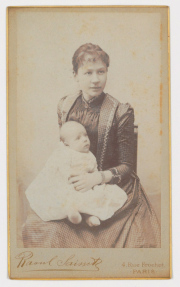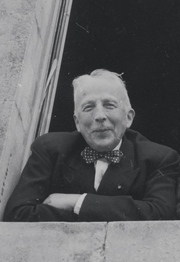Jo
Johanna van Gogh-Bonger
Today I’d like to take a moment to honor one of the most important and most forgotten figures in Vincent’s work and life: Jo van Gogh-Bonger. Lovely, lovely Jo.
Jo married Theo van Gogh, Vincent’s brother, on May 2nd, 1889. Since Vincent died July 29th, 1890, Jo only met Vincent on a few occasions, all within the last three months of his life. She wrote him a handful of letters that speak for themselves. Here are her first words to him:
Dearest brother, 8 May 1889
It’s high time that your new little sister came to chat with you and didn’t always just let Theo convey her regards. When we weren’t married yet I always thought: Well, I don’t really dare to write to Vincent about everything yet, but now we really have become brother and sister, and I would so much like you to know me a little and, if possible, love me a little.
For my part — it’s been the case for a long time — I’ve heard so much about you, both from Wil and from Theo — and here in the house there are masses of things that are reminders of you, when I find a nice little jug or a vase or something, then it’s always: Vincent bought that or V. liked that so much — scarcely a day passes when we don’t speak of you. [full letter]
Now, not only did this woman have a very sweet soul, but she also gave birth to Vincent Willem van Gogh (what a name to carry…), Theo’s son, on the 31st of January 1890. Vincent Willem ended up with all the paintings Jo had kept by her death in 1925, and in 1960 the Vincent van Gogh Foundation was founded based on their enormous family treasure; it still houses the largest collection of Vincent van Gogh’s work – “some 200 paintings, 500 drawings and 700 letters, as well as the artist’s own collection of Japanese prints” as they put it. But Jo is much more than the mother of Vincent’s nephew and heir. (Although, this photo of Vincent Willem in 1952 is positively delightful)
Theo inherited all of Vincent’s work upon his death (this was an unanimous family decision given that Theo had supported Vincent for almost the entirety of his ten-year artistic career), and then when Theo died six months later, Jo inherited everything.
I often consider Jo at that moment, who had been married for only a year and a half, given birth to a son and named him after her brother-in-law, her husband’s closest friend, and then watched both her husband and his brother die in the year following her son’s birth. Jo was 29 years old, quite alone, left with a one year old baby, hundreds of paintings and drawings and letters. What does Jo do?
In November 1891, ten months after her husband’s death, she wrote in her diary:
Besides the child he [Theo] has bequeathed me another task – Vincent’s work – to get it seen and appreciated as much as possible; keeping all the treasures that Theo and Vincent had collected intact for the child – that, too, is my work.
Within the next few months, she resolved to organize all of the letters Theo had kept of Vincent’s, to edit, translate, and publish them. This task, creating the first complete publication of the letters between Theo and Vincent, would take her twenty-two years. That’s over twice as long as Vincent spent painting.
Now while there were certain passages suppressed and certain liberties taken to protect some individuals (all of which was quite normal for the publication of letters at the time), no one can doubt the enormity of her undertaking… Most of the letters had no date and her notes reveal she had a very difficult time finding the correct order (and she was still wrong on various points). It is additionally astounding that she financed the publication herself. It would be seven years before she recouped the cost, let alone made a profit from her publication. And while she was organizing, editing and translating, she also endlessly promoted Vincent’s work through exhibitions and sales. What would have happened if it weren’t for Jo? I believe that she, more than anyone other single figure, secured Vincent’s legacy. Theo kept Vincent alive, Jo kept him remembered.
However, what always strikes me deep in my heart is what she did upon completing this incredible project. When Theo died in 1891, he had been buried in Utrecht, in the Netherlands, in his homeland. In 1914, Jo had Theo’s remains moved to Auvers-sur-Oise, where he could rest forever at Vincent’s side.
And in their death they were not divided. (2 Samuel 1:23)
That was your motto for the publication of all the letters, Jo.
On behalf of so many, I would like to thank you. Thank you for your love, your dedication, your time, your energy… Thank you, Jo, for saving him. I really believe you did.




What a woman! An inspiration for all of us!
I couldn’t agree more. I try to be like her as much as I can.
I read this again today, and it still warms me up like nobody’s business. Beautiful writing for a beautiful soul. Thank you, Teresa.